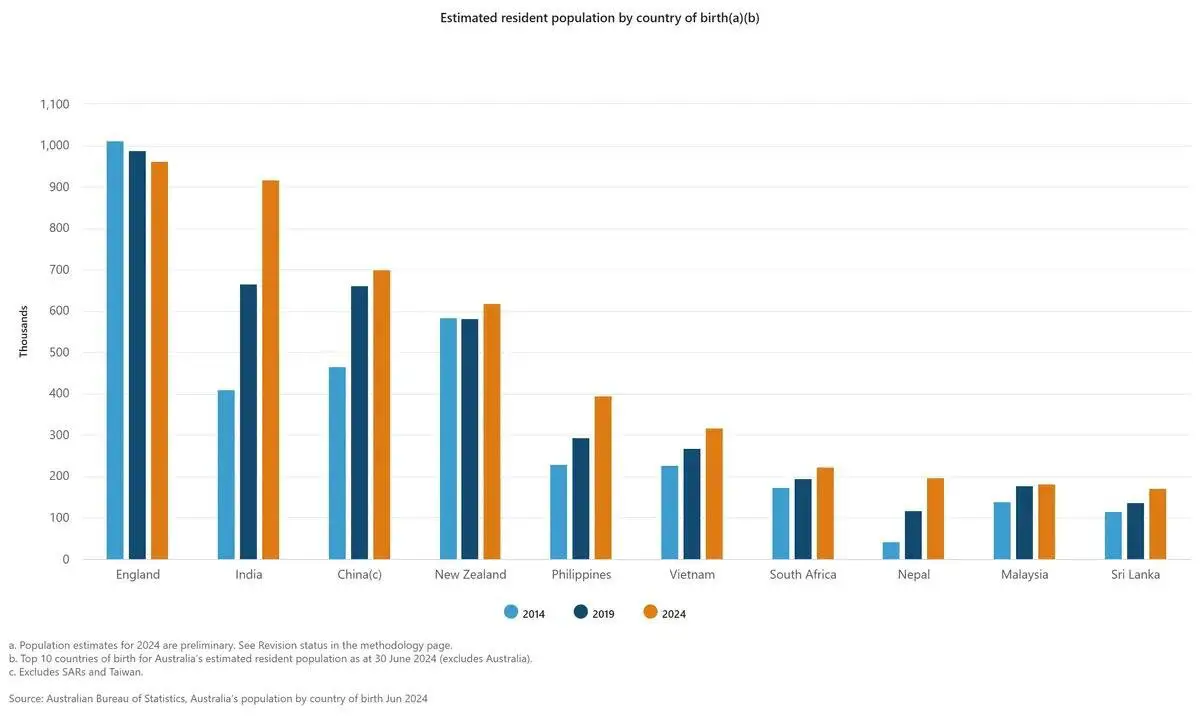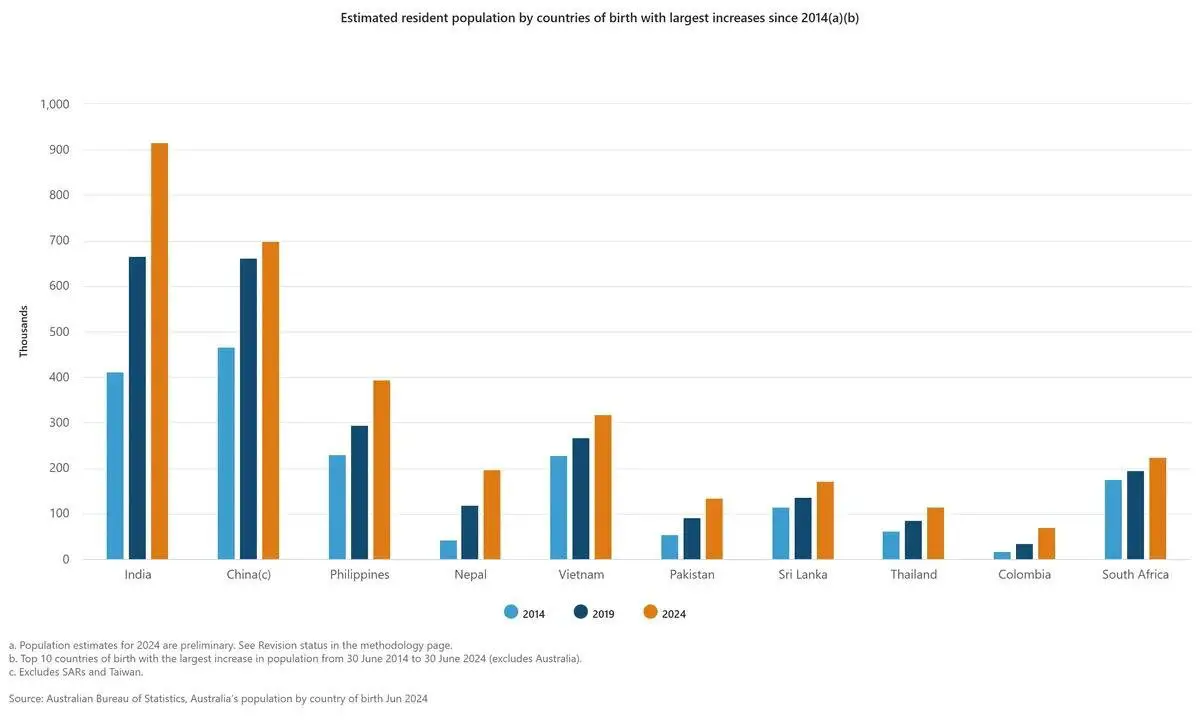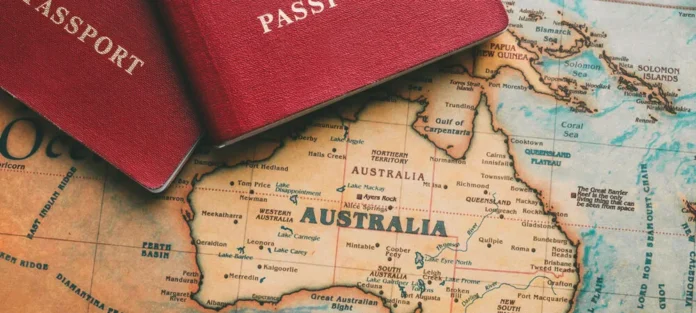Staff Reporter
Australia’s population is becoming increasingly multicultural, with over 8.6 million residents born overseas—accounting for about 31.5% of the total population.
A significant influx is coming from India, which is projected to surpass the UK as the leading country of birth for migrants later this year.
According to the latest data from the Australian Bureau of Statistics (ABS), as of 2025, there were 963,560 migrants from the UK, 916,330 from India, 700,120 from China (excluding Hong Kong and Macau), 617,960 from New Zealand, and 394,380 from the Philippines. Other notable countries include Vietnam (318,760), South Africa (224,160), Nepal (197,800), Malaysia (183,490), and Sri Lanka (172,800).
The proportion of overseas migrants has steadily increased from 23.8% in 2004 to 31.5% in 2024. Australia ranks eighth globally for the number of international migrants, with the United States leading with 52.4 million overseas-born residents.

Migration Trends
Migration from Europe has been declining over the years, with Asian countries now being the dominant sources of new arrivals. In the decade from 2014 to 2024, India saw a surge of 505,000 new migrants, followed by China (234,000), the Philippines (164,000), and Nepal (155,000).
“India’s demographics, skilled workforce, and high demand for international education have made Australia a preferred destination,” said Annathurai Gnanasambandam, director of Visa Help Australia.
In contrast, the UK experienced the largest drop in migrant numbers, with 47,000 fewer individuals arriving in Australia from 2014 to 2024. Italy, Greece, and Germany also saw decreases.

Regional Differences
The demographic composition varies across states and territories. In New South Wales, Chinese migrants are the largest overseas group, followed by British and Indian residents, according to the 2021 Census. Victoria has seen a significant increase in Indian migration, surpassing Chinese migration by about 90,000 individuals.
In Queensland, New Zealanders and British migrants form the largest overseas communities, with Indians and Chinese following. The British remain the largest contributors in Western Australia and Tasmania.
Housing and Migration Debate
Migration continues to be a contentious issue, particularly regarding housing affordability. The Coalition has accused the Albanese government of mismanaging immigration, with net overseas migration for 2023–24 projected to reach 340,000—80,000 higher than initial estimates.
Shadow Immigration Minister Dan Tehan criticized Labor for “consistently overshooting” forecasts and promised to reduce permanent migration from 185,000 to 140,000 if elected. In response, Treasurer Jim Chalmers defended the government’s approach, noting that net migration is currently at its lowest since the pandemic and emphasizing a rebalancing of the system to serve Australia’s national interests.

